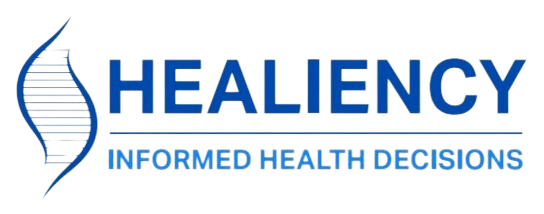In the face of rising prices and the challenges of inflation, individuals find themselves grappling not only with financial worries but also with the need to take care of their health. The increasing cost of living poses a significant obstacle, jeopardizing our well-being. In this article, we explore the intricate relationship between inflation and health, sharing practical strategies to navigate these uncertain times. By recognizing how economic stability and our health are intertwined, we can prioritize our well-being and find strength amidst the unpredictable waves of inflationary pressures. In this post, we uncover ways to maintain good health during times of economic upheaval. Below are four strategies that can empower us to maintain our well-being amidst economic uncertainties.
1. Navigating Nutritional Challenges in Lean Times.
When economic uncertainties tighten their grip, upholding a nutritious diet may appear insurmountable. Nevertheless, embracing innovative approaches empowers us to nourish our bodies while navigating budgetary constraints.
One strategy is to redefine culinary landscapes by embracing affordable yet nutrient-dense ingredients. Staples such as beans, lentils, and whole grains offer a wealth of essential vitamins, minerals, and fiber. Seek out local farmers’ markets and community-supported agriculture initiatives, which provide opportunities to access fresh produce at reasonable prices, fostering both health and community connections.

2. Fit and Frugal: Resilient Fitness Regimes Amid Economic Constraints.
Physical activity stands as a cornerstone of well-being, even in the face of inflationary pressures. Uncovering novel avenues for fitness empowers individuals to preserve their health while keeping a watchful eye on their finances.
Embrace low-cost exercise options that leverage our natural surroundings. Engaging in activities like walking or jogging in local parks, exploring nearby trails, or participating in outdoor group exercises promotes fitness without incurring hefty expenses.
Harness the power of online platforms that offer free or affordable workout routines. From virtual classes to fitness apps, these digital resources enable individuals to tailor exercise regimens that align with their financial means.
3. Investing in Preventive Health: A Shield for the Future in Times of Economic Uncertainty.
During times of economic turmoil, it may be tempting to neglect preventive healthcare. However, prioritizing our well-being in the present can have significant long-term benefits, reducing the burden of future healthcare expenses (Smith et al., 2022).
Focus on routine check-ups, screenings, and vaccinations to identify and address potential health risks early on. This proactive approach aids in averting more substantial health issues that may impose exorbitant costs down the road.
Maximize the benefits of health insurance coverage to ensure access to preventive services without compromising financial stability. Community health centers and nonprofit organizations often offer affordable options for essential healthcare needs.
4. Unbreakable Spirits: How to Fortify Mental Well-being Amid Inflationary Pressures?
In times of economic uncertainty, stress can have a heavy toll on our emotional and mental well-being. Cultivating emotional resilience through mindful self-care practices becomes indispensable for weathering the storm.
Engage in activities that promote self-reflection and self-care, such as meditation, journaling, or pursuing creative outlets. These practices serve as anchors amidst turbulent times, fostering emotional equilibrium.
Forge connections with loved ones, friends, or support groups. Cultivating meaningful relationships provides solace, empathy, and a sense of belonging, acting as powerful antidotes to isolation and stress.

How To Make The Best Out of this Situation?
As inflation raises concerns about our financial stability, it’s crucial to prioritize our health and well-being. Our health should not just be a casualty of economic turmoil. By adopting innovative ways to eat nutritiously, exploring affordable fitness options, investing in preventive healthcare, and building emotional resilience, we can navigate the challenges of economic upheaval while protecting our well-being. This journey of resilience strengthens us against the negative effects of inflation, empowering us to emerge stronger and more determined to safeguard our health in the midst of economic uncertainty.
In addition to these strategies, we can further optimize our resources by embracing the sharing economy. Sharing platforms and collaborative initiatives enable us to access goods, services, and experiences at a fraction of the cost, allowing us to make the most out of our situation. From carpooling and bike-sharing to community tool libraries and shared gardens, the sharing economy fosters a sense of connection, reduces waste, and promotes sustainable living.
References:
[1] Anekwe, T. D., & Rahkovsky, I. (2013). Economic Costs and Benefits of Healthy Eating. Current Obesity Reports, 2, 225-234. https://link.springer.com/article/10.1007/s13679-013-0064-9
[2] Benson, B. L., Storey, E., Huntington, C. G. III, Eberle, M. U., & Ferris, A. M. (June 2008). The Economic Impact of Prevention: A report prepared by The Center for Public Health and Health Policy at The University of Connecticut Health Center and The University of Connecticut, Storrs. https://health.uconn.edu/population-health/wp-content/uploads/sites/210/2019/05/UCONN_EconomicImpactPrevention.pdf.
[3] Burshtein, S. (2020). The Law of the Sharing Economy. Thomson Reuters.
[4] Chatterjee, A., Prinz, A., Gerdes, M., & Martinez, S. (2021). Digital Interventions on Healthy Lifestyle Management: A Systematic Review. Journal of Medical Internet Research, 23(11), e26931. doi: 10.2196/26931.
[5] Cronshaw, S. (2022). Web workouts and consumer well-being: The role of digital-physical activity during the UK COVID-19 lockdown. Journal of Consumer Affairs, 56(1), 449–464. doi:10.1111/joca.12375. Retrieved from https://www.ncbi.nlm.nih.gov/pmc/articles/PMC8242656/
[6] Godinic, D., Obrenovic, B., & Khudaykulov, A. (2015). Effects of Economic Uncertainty on Mental Health in the COVID-19 Pandemic Context: Social Identity Disturbance, Job Uncertainty, and Psychological Well-Being Model. International Journal of Innovation and Economic Development, 1(6), 52-61. doi:10.18775/ijied.1849-7551-7020.2015.61.2005
[7] Masters, R., Anwar, E., Collins, B., Cookson, R., & Capewell, S. (2017). Return on Investment of Public Health Interventions: A Systematic Review. Journal of Epidemiology and Community Health, 71(8), 827–834. doi: 10.1136/jech-2016-208141.
[8] National Institutes of Health. (2022, April). Bouncing Back From Difficult Times: Nurture Your Resilience. NIH News in Health, 1-4. Retrieved from https://newsinhealth.nih.gov/2022/04/nurture-your-resilience.
[9] Wang, F., Wang, J.-D., & Huang, Y.-X. (2016). Health Expenditures Spent for Prevention, Economic Performance, and Social Welfare. Health Economics Review, 6(45). https://doi.org/10.1186/s13561-016-0136-9










